Timing is everything for growing things, so what is the right timing for planting strawberry plants outside?
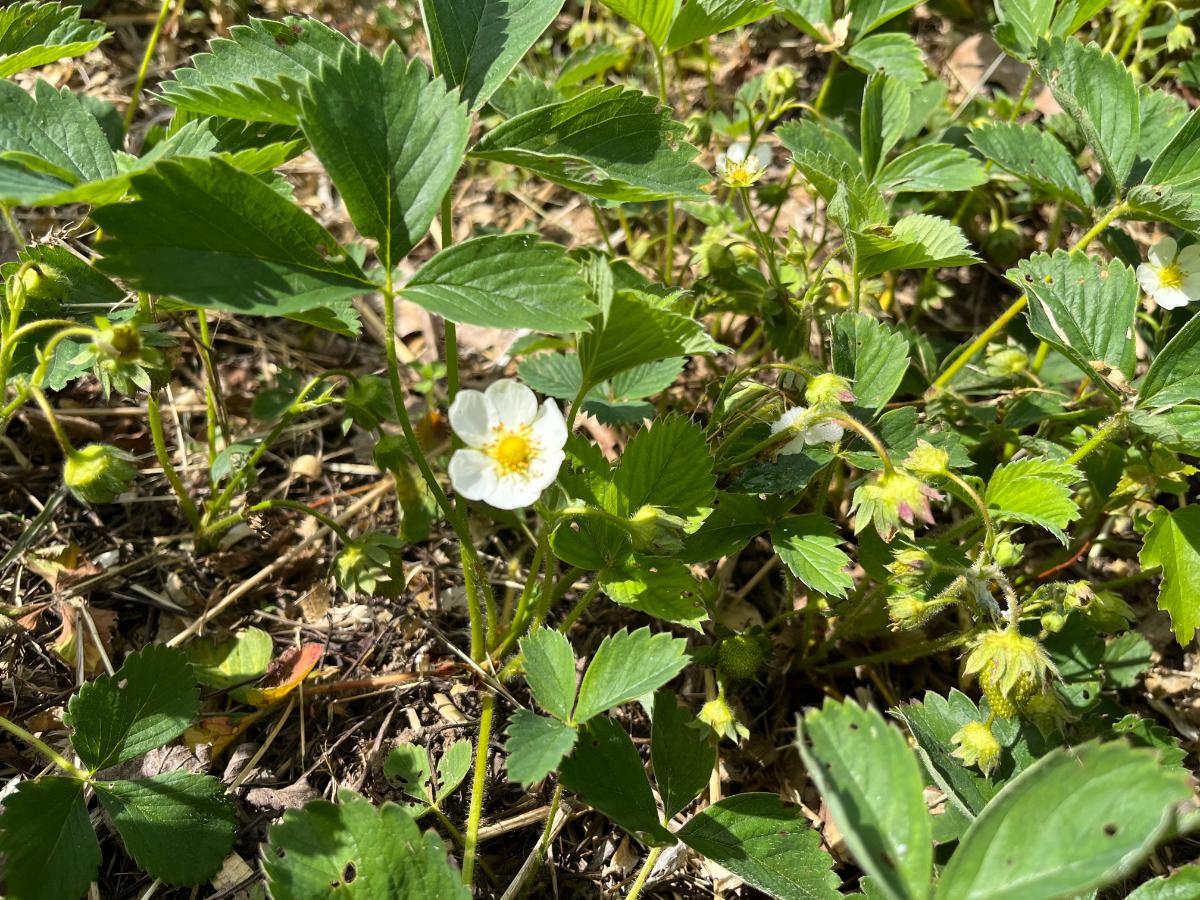
Strawberry plants are among the first plants you can (and should) plant in the spring. You want to lean more toward early and cool than hot and summer heat.
Here’s a guide to when you should plant new strawberry plants.
Jump to:
Plant early in the Spring
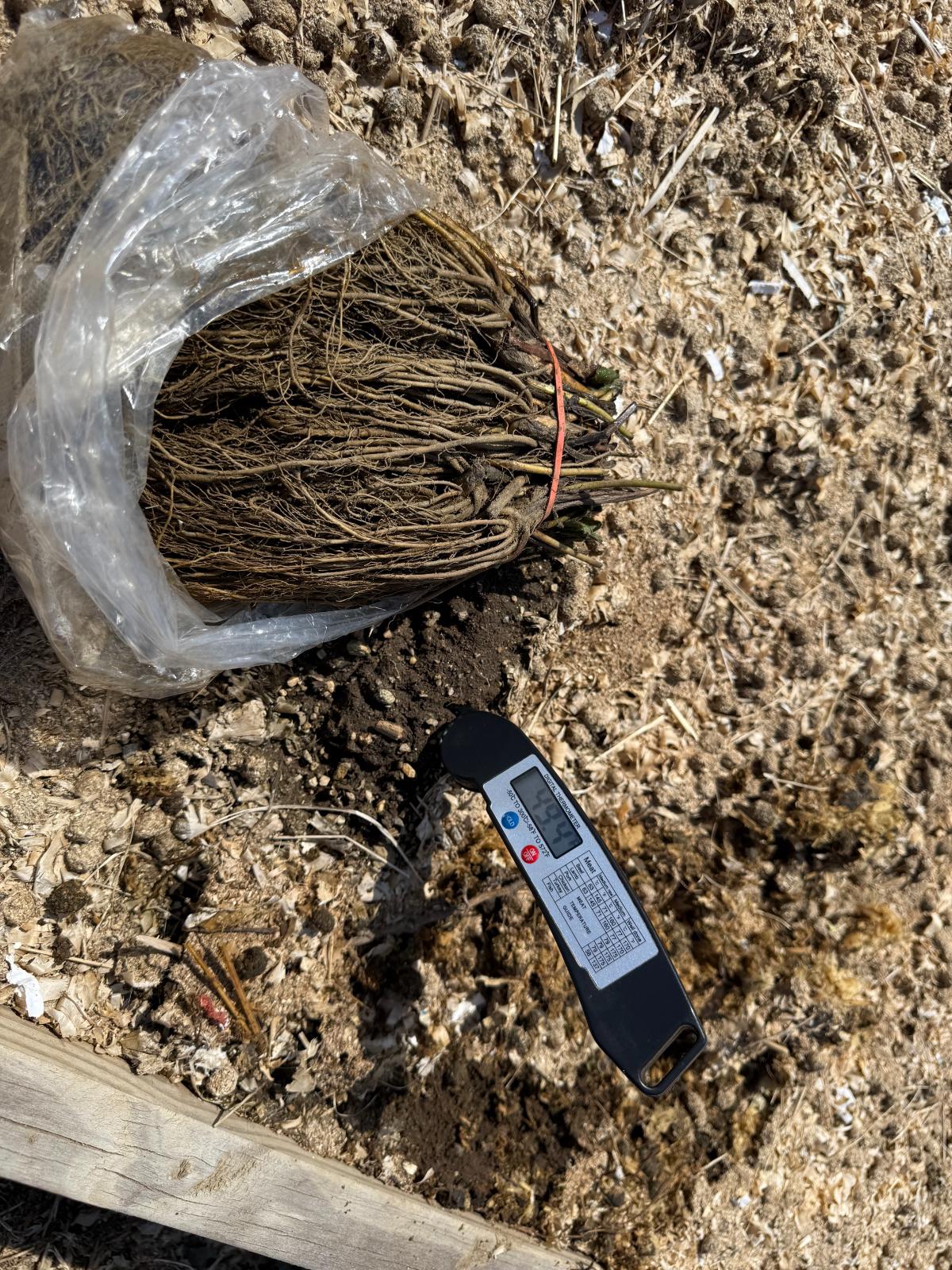
Cool spring temperatures encourage root growth and allow the plants to become established before they start putting their energy into foliar growth. They give strawberries the time they need to set up and prepare for the more stressful heat and conditions of summer.
You should get your strawberry plants in the ground while conditions are still cool, in the early spring.
Although some sources say to wait until after the danger of frost has passed, you should really put your strawberries in the ground earlier than that, according to expert sources.
You do not want to plant while you are still experiencing hard frosts, but strawberries will continue to grow through light frosts.
- Light frost is considered -29 to 32 degrees Fahrenheit (-2 to 0 Celcius)
- Moderate frost ranges from 25 to 28 degrees Fahrenheit (-4 to -2 Celsius)
- Hard frosts are basically when the ground is freezing hard down below the surface, 24 degrees Fahrenheit and below ( -4.44 Celsius and lower)
You can plant strawberries in the low to moderate frost range (preferably when your nighttime temperatures are staying more in the light frost range and preferably if moderate frost temperatures are few and far between). Daytime temperatures should be generally above freezing. Preferably, the daytime temperature should be mostly 45 to 50 degrees (7.2 to 10 C) and above about 75 degrees (24 C) (but some lower dips may still occur).
If you are planting transplants or plugs, you should wait until you are only in the “light frost” stage. Bare root plants can go in earlier because they don’t yet have that tender green growth.
Plant when the soil is still cool
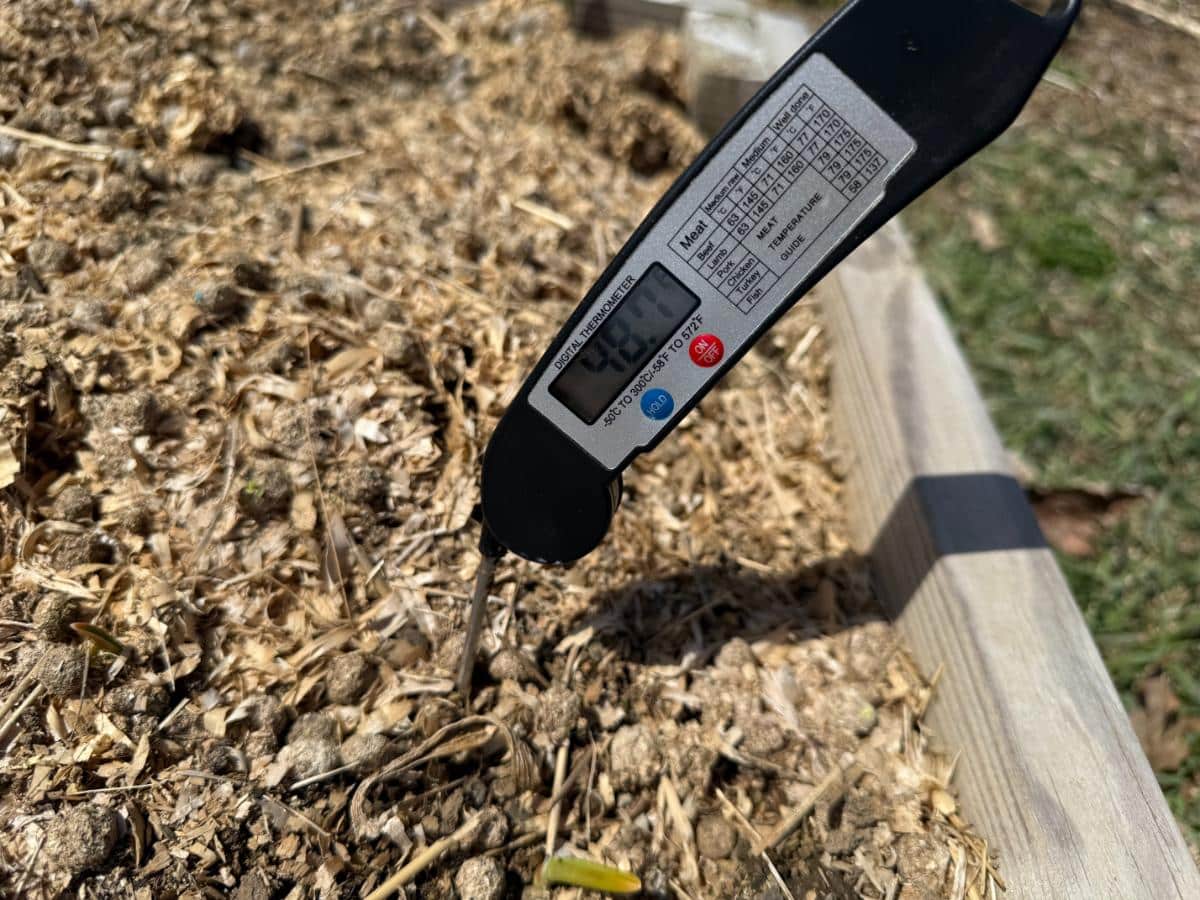
Soil temperature and condition are better indicators of when to plant strawberries than frost warnings and air temperatures are. (See below for condition criteria.)
The reason this is true is that soil temperatures fluctuate less than air temperatures. After all, a freak late frost can occur in many places as late as June — and that is when strawberries bear fruit, so we know the plants at least can survive that (but not necessarily the blossoms or immature fruit).
The other reason this is true is that the part of the plant growing the most in the early spring is the roots, which like those cool soil temperatures.
Dormant bare-root plants are the most efficient way to plant a new strawberry patch and the most popular. They “wake up” with the warming season, more like how older strawberry plants from established patches would. So they don’t tend to notice the cold temperatures. They just remain dormant until it’s time for them to grow again.
What is the best soil temperature for planting strawberries?
- Plant strawberries when the soil has warmed to 45 to 50 degrees (7.2 to 10 C)
- The lower end of the spectrum is quite safe for bare-root strawberry plants
- Plugs and transplants should wait until the soil is toward the upper end of the range, around 50 degrees (10 C)
- Strawberries break dormancy when the soil has reached about 50 degrees (10 C)
Keep an eye on your soil and take some temperatures because this may come earlier than you think. The sun is strong in the spring, and even if your days are cool, the sun warms the soil with its rays. The ground has a large thermal mass, which holds that heat for a long time, even when cold temperatures dip for a few days. That is protective and productive for the roots in the ground.
Taking a soil temperature is easy — check out how it’s done here.
Plant when the Soil Becomes Workable

What is workable soil?
Workable soil is soil that is
- Thawed from winter freezes
- Drained of excess moisture from winter/spring thaws
- Does not hold puddled melt or winter runoff
- Crumbles rather than clumps when squeezed in your hand
Once any winter frost has left the ground and the standing water from winter, snow, and ice melts drains away, test the soil to see if it is workable. The biggest indicator is how the soil holds together.
- Pick up a handful of soil and press it together into a ball about the size of a tennis ball
- When you release your hands, if the soil crumbles apart either by itself or with light pressure from your fingers, it is workable and ready for early planting
- If the ball holds together in a mud ball, the soil is not yet workable. It needs more time to drain away winter’s excess water
- Check again in four days to a week
- As soon as the soil is workable, you can begin planting!
Timing and Planting Strawberries According to Zone

Here’s how to figure out the zone equivalent if you do not live in the United States. The zones are based on estimated extremely low winter temperatures, so really, it’s just a matter of figuring out where your average winter cold falls on the scale.
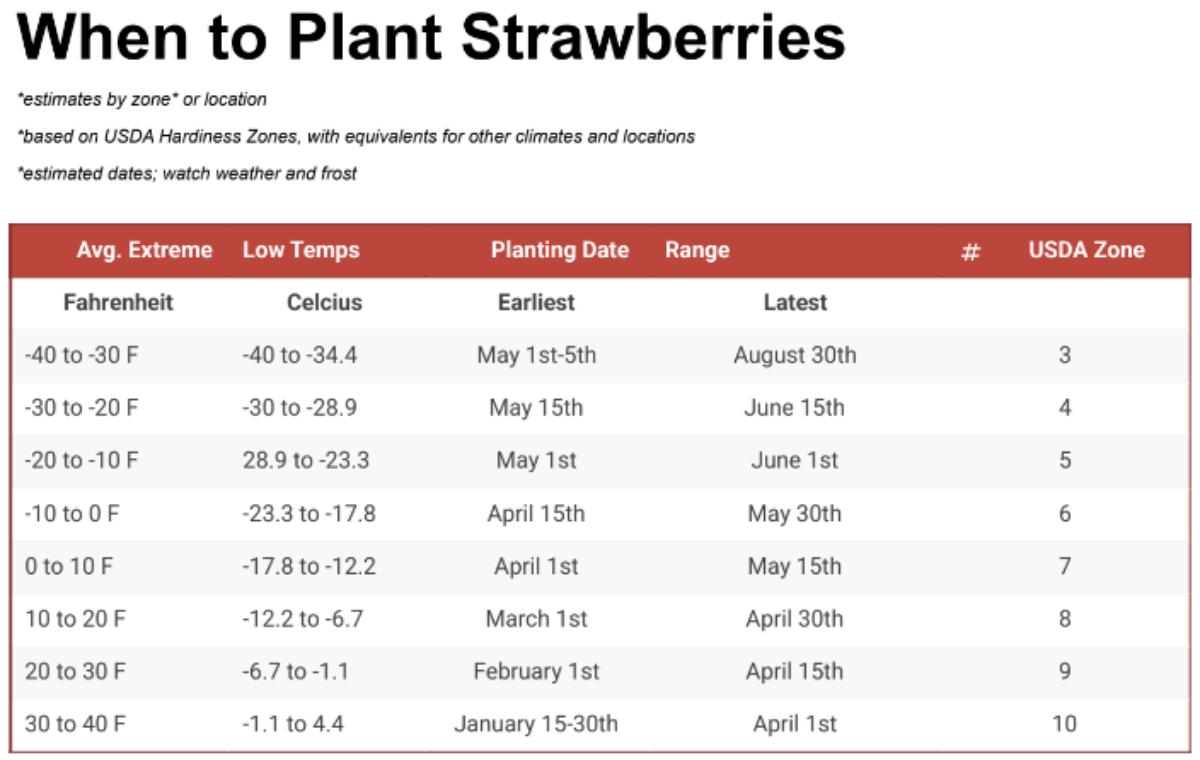
Close enough will do
For planting strawberries, “close enough” will do when it comes to spring timing!
Though spring temperatures follow some average calendar dates for warming and planting, we all know that this can vary from year to year anyway.
Fortunately, as perennials, strawberries are quite forgiving. Combine this timing with other planting signals, like workable soil and soil temperature, and you should be all set even if you’re just close and even if you’re a little early.
Frost is an issue for blossoms but not so much for the plants
If a hard frost does crop up in your forecast, simply cover your plants with some frost cover fabric, and they will fare well.
In fact, the plants themselves will usually be fine even through light frosts and don’t need to be covered, but the blossoms and fruit set will suffer if you get a late frost after your strawberries have started to flower (however, it’s less of an issue in the first year because you should be removing those first blossoms to let the plants grow roots and establish, anyway).
Planting Strawberries by Phenological Signs
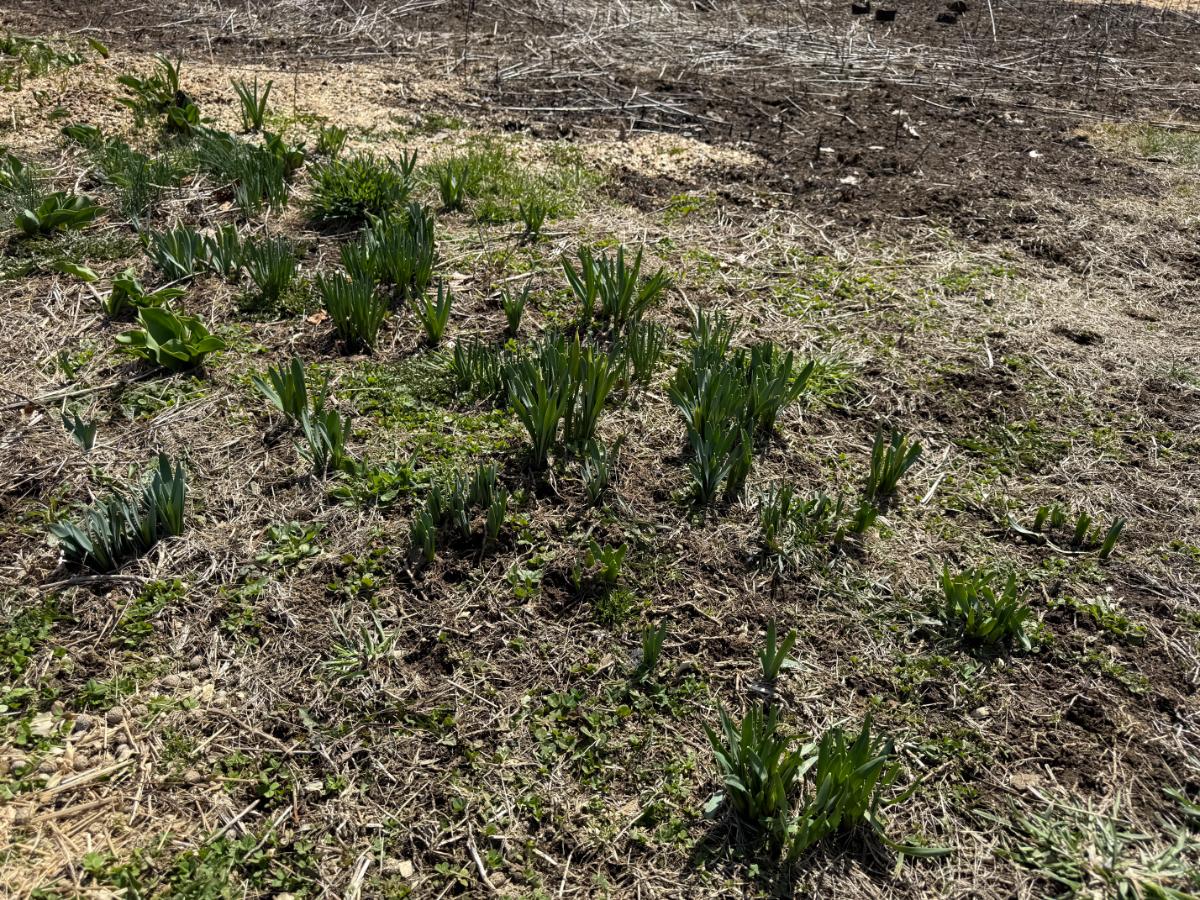
As perennials, strawberries take their signals from weather and climate conditions, which we know can vary from year to year. Those conditions may come earlier or later.
In nature, perennials with similar sets of habits relating to dormancy, budding, sprouting, and growing can often be looked to for deciding things like planting like-minded plants.
Planting in tune with the wake-up signs and signals of the spring is called phenology.
You might think of these signs and sayings as age-old wisdom that gets passed down, or even as “old wives tales”. But there is something to the science of it, too. Many of the spring happenings occur at certain temperatures and conditions.
A fair phenological sign to follow for strawberry planting would be that of perennial planting. (There don’t seem to be many recorded phenological signs specifically for strawberries, but this would be their closest plant relative.)
So, for strawberry planting, a good one to follow would be this:
Plant strawberries when maple leaves just start to open.
Watch the wild berries
Another reasonable phenological sign would be to watch and see when the wild strawberries begin to grow. This may be even more accurate because the plants are related. Note that you’d be watching for the first signs of spring growth, not blossoming or flowering, which comes much later. Just look for the new leaves to pop and green up.
If you have an existing strawberry bed or any old plants still around, even cultivated or hybrid varieties, you could use those as a guide, too.
Note when this happens, and note your soil temperatures then, too. See if the soil is up to 50 degrees (10 C)…it’s a solid bet that both these things will happen together!
P.S. for Garlic Growers
Garlic, which is typically planted in the fall and overwinters in the ground, also breaks dormancy and grows new shoots and sprouts at about the same time and soil temperature as strawberries.
So, if you also grow garlic, look to when the garlic starts shooting up in the early spring. When you see many shoots of about two inches, that tells you it’s a good time to put your strawberries in the ground.
Garlic typically sprouts when the soil temperature reaches about 50 degrees (10 C).
…That’s the same temperature that strawberries want to break dormancy and grow, so watching your garlic is a good phenological signal to start planting your strawberries!
…Or Rhubarb

Rhubarb, strawberry’s perfect partner, also sprouts early and in cool soil temperatures. Rhubarb will generally emerge a little before and at temperatures a little lower than garlic and strawberries, but they’re all pretty close in range.
Rhubarb will typically start peaking up through the soil at 40 to 45 degrees. So once you start to see rhubarb emerging, start taking some soil temperatures and think about putting your strawberries in the ground in about the next week or two.


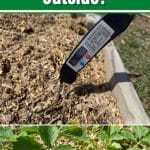





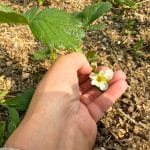
Leave a Reply